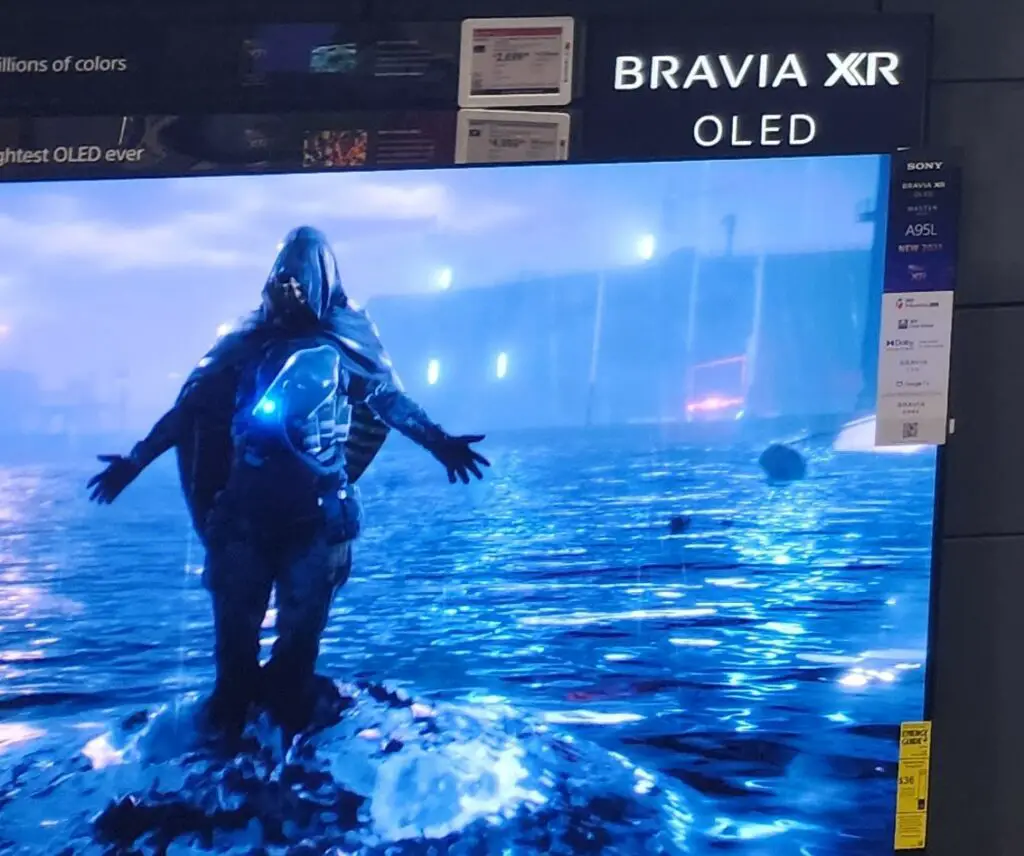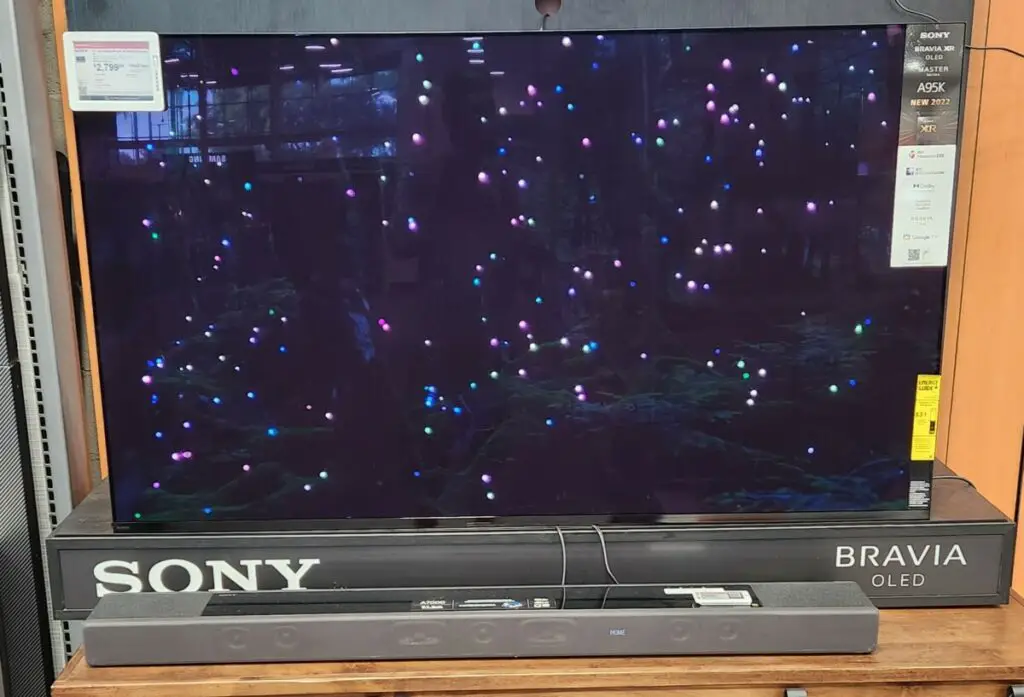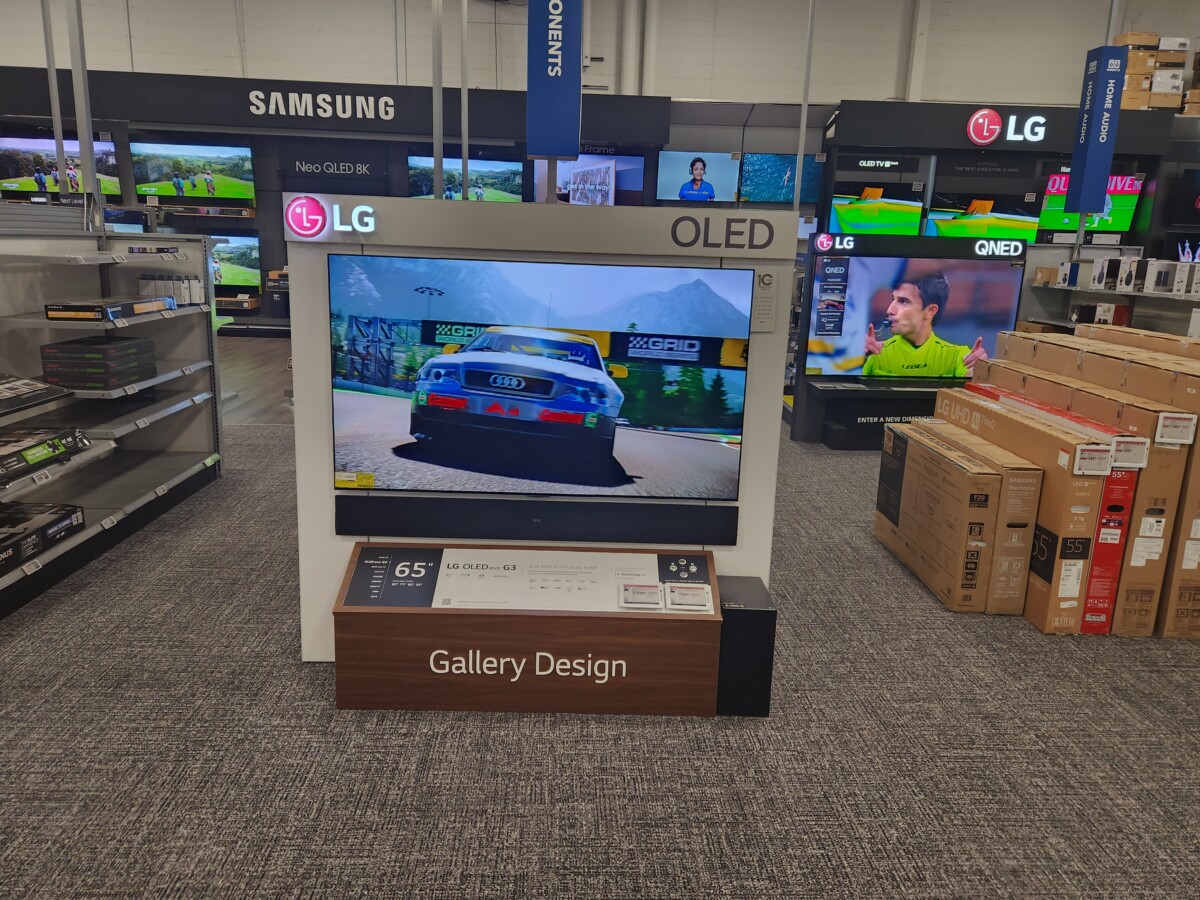As an Amazon Associate I earn from qualifying purchases
If you’re in the market for a new TV, you may have heard rumors that OLED technology is being phased out.
However, if you’re a movie buff who values picture quality above all else, you’ll be happy to know that OLED TVs are still the best option available.
They offer unparalleled contrast, deep blacks, and vibrant colors, making OLED TV’s the perfect choice for watching movies.
So with that being said, what is the future of OLED TVs? Are they being phased out?
OLED TVs are not being phased out currently but that could change in the next 5-10 years with emerging technologies like microLED which could lead to a dramatic decline of OLED TV sales.
In fact, It could lead to the extinction of the product.
In this post, I will explain why OLED could be phased out in the near future and why microLED looks like it could take OLED’s place as the gold standard of television displays.
Is OLED Being Phased Out?

When it comes to the best picture quality for movies, OLED TVs are currently the best on the market.
However, OLED faces several drawbacks that could put it at risk of being phased out by future competitors if it does not adapt.
One of the biggest problems with OLED displays is burn-in or image retention.
This occurs when a static image is displayed on the screen for an extended period of time, causing a ghost image to remain on the screen even after the image changes.
While some manufacturers have implemented measures to reduce the risk of burn-in, it remains a significant concern for consumers.
Another issue with OLED displays is their lack of brightness.
While OLED displays can produce incredibly deep blacks, they struggle to produce bright whites.
This can make them less ideal for viewing in brightly lit rooms.
Finally, OLED displays are generally more expensive than other types of displays, such as LCD and QLED.
While the price of OLED TVs has come down in recent years, they still remain a premium product that many consumers may not be willing to pay for.
Given these issues, it’s possible that OLED could be phased out by future competitors that are able to address these concerns.
However, OLED could continue to improve, and it’s possible that these issues could be resolved in the future.
For now, OLED remains the best option for those looking for the best picture quality for movies.
MicroLED Will Probably phase out OLED
When it comes to picture quality for movies, OLED has been the reigning champion for years.
However, with the emergence of MicroLED technology, that may not be the case for much longer.
MicroLED has the potential to surpass OLED in terms of picture quality, brightness, and color accuracy.
MicroLED technology has the benefits of QLED and OLED combined, with perfect contrast and color and 5 times the brightness of OLED.
Additionally, there is no risk of burn-in, which is a common concern with OLED TVs.
While MicroLED TVs are currently extremely expensive and not widely available, it’s possible that they could phase out OLED in the future as prices come down.
While OLED TVs will likely continue to dominate the market for the next few years, MicroLED technology is rapidly developing and could become the new standard for home theater displays.
Samsung is also developing an OLED/QLED hybrid, which could offer the best of both worlds in terms of picture quality and brightness.
However, it remains to be seen how this hybrid technology will perform compared to MicroLED and OLED.
Market Trends and Consumer Preferences

When it comes to home theater displays, market trends and consumer preferences are constantly evolving.
As technology advances, consumers are demanding better picture quality, higher resolution, and more features.
In this section, we will discuss some of the key market trends and consumer preferences that are driving the development of home theater displays.
Need for High Peak Brightness
One of the main trends in the home theater display market is the need for high peak brightness.
This is especially important for HDR content, which can sometimes skew too dark. This is exacerbated by OLED.
I’ve shown off my Sony OLED (affiliate link) and many people commented the TV looks too dark to them.
Mind you I’m using 4k Blu-ray content and my TV is in a dark room with blackout curtains (affiliate link).
Most people are just used to higher brightness and I don’t blame them.
I’d love to have a TV that had the benefits of both OLED and QLED to be honest.
OLED is not for everyone, it’s dim and dark, phenomenal contrast though.
Demand for Higher Resolution and HDR

Another trend in the home theater display market is the demand for higher resolution and HDR.
In recent years, 4K resolution has become the standard for high-end displays, and many consumers are now looking for even higher resolutions such as 8K.
Although I think 8k is overkill and largely a scam.
Additionally, HDR content is becoming more prevalent, and consumers are looking for displays that can display high-end HDR content such as Dolby Vision or HDR 10 Plus with the full range of colors and contrast.
Future of OLED Technology

While there are certainly other technologies being developed, OLED is still expected to be a major player in the display market for the foreseeable future.
Their prices are only going to go down more and more and become more accepted among casual consumers.
However, in terms of quality, they will probably be surpassed by microLED in the next 5 years.
When it comes to televisions, OLED is currently the gold standard for picture quality when it comes to movies and other cinematic content.
For the foreseeable future, I can still see OLED being the top choice for home theater enthusiasts until the price of microLED comes down.
Best OLED TVs

- LG OLED EVO: Brightness Booster Max adjusts the picture for up to 70% brighter images* so you can see rich, vibrant colors and incredible contrast, even in well-lit rooms.
- HDR: Every LG OLED comes loaded with Dolby Vision for extraordinary color, contrast and brightness, plus Dolby Atmos* for wrap-around sound.

- INTELLIGENT TV PROCESSING The Cognitive Processor XR understands how humans see to deliver intense contrast with deep blacks, high peak brightness, and natural colors.
- OUR BEST COLOR - Experience Quantum Dot color with saturation and brightness of every color maximized by the breakthrough QD-OLED panel and XR Triluminos Max.
- OLED CONTRAST XR OLED Contrast Pro technology allows you to feel the beauty of OLED with immersive depth and realism, pure black, and lifelike brightness.

- SAMSUNG OLED TECHNOLOGY: See movies, games, and more in a whole new light thanks to the mesmerizing picture quality across a full range of gorgeous colors; Only a brand like Samsung can provide incredible detail and unbelievable screen brightness.voltage : 120 volts
- NEURAL QUANTUM PROCESSOR W/ 4K UPSCALING: If you’re streaming an HD movie, watching sports, or looking at home videos, experience it all transformed into sharp 4K resolution with our high-performance, AI powered processor*
- QUANTUM HDR OLED: With fine-tuned brightness and optimized contrast made possible by self-illuminating pixels, your picture is instantly enhanced as Quantum HDR OLED analyzes each scene so you can enjoy rich and accurate colors
- PANTONE VALIDATED: Enjoy color validated by industry leading experts at Pantone, so that images on the screen look as incredible as they do in real life
- DOLBY ATMOS & OBJECT TRACKING SOUND LITE: Keep your ears on the action with Dolby Atmos and virtual top speakers that follow the story; When a dragon swoops across the screen, 3D sound moves along with it thanks to Object Tracking Sound Lite
- MOTION XCELERATOR TURBO PRO: Motion Xcelerator Turbo Pro creates consistently crisp 4K visuals at blazing-fast speeds up to 120hz and Game Motion Plus goes up to 144hz with compatible PC-connected content
Conclusion
In conclusion, while OLED technology continues to reign as the gold standard for picture quality in home theater displays, there are potential challenges on the horizon.
The emergence of MicroLED technology presents a formidable competitor with its promises of superior picture quality, brightness, and color accuracy, coupled with the absence of burn-in concerns.
Although MicroLED TVs are currently limited by their high prices and limited availability, their potential to phase out OLED in the future cannot be overlooked.
As market trends and consumer preferences evolve, the demand for higher peak brightness, resolution, and HDR capabilities is evident.
While OLED prices are expected to decrease and gain wider acceptance among consumers, the looming shadow of MicroLED advancements suggests a shifting landscape in the next 5 to 10 years.
For now, OLED remains the go-to choice for home theater enthusiasts, but the future dynamics of the display market are poised for change, with MicroLED technology leading the charge into a new era of visual excellence.
Frequently Asked Questions
Which is better OLED or Qled?
OLED offers superior picture quality with deeper blacks and vibrant colors due to individual pixel control. However, QLED TVs are known for their brighter screens and can handle well-lit rooms better. If you prioritize picture quality in a dark environment, OLED is generally considered better, while QLED may be preferable for those who prioritize brightness and room lighting conditions.
Will an OLED TV last 10 years?
OLED TVs are generally designed to have a lifespan of around 100,000 hours of use. If you watch TV for an average of 5 hours a day, the TV could last over 50 years. However, factors such as brightness settings, content with static images (which can lead to burn-in), and overall care can affect the TV’s longevity. While OLEDs have proven to be durable, it’s essential to consider usage habits and take preventive measures to maximize the lifespan.
Can you fix burn in OLED?
Burn-in on OLED displays occurs when static images are displayed for extended periods, causing a ghost image to linger. While prevention is crucial (through features like pixel shifting and screen savers), fixing burn-in can be challenging. Some manufacturers offer features like pixel refresh or screen savers that may alleviate the issue to some extent. However, complete reversal of burn-in is typically not guaranteed. It’s advisable to use the TV responsibly, avoiding static images for prolonged durations, to minimize the risk of burn-in. If burn-in does occur, contacting the manufacturer’s support or seeking professional assistance may provide potential solutions, though success may vary.


